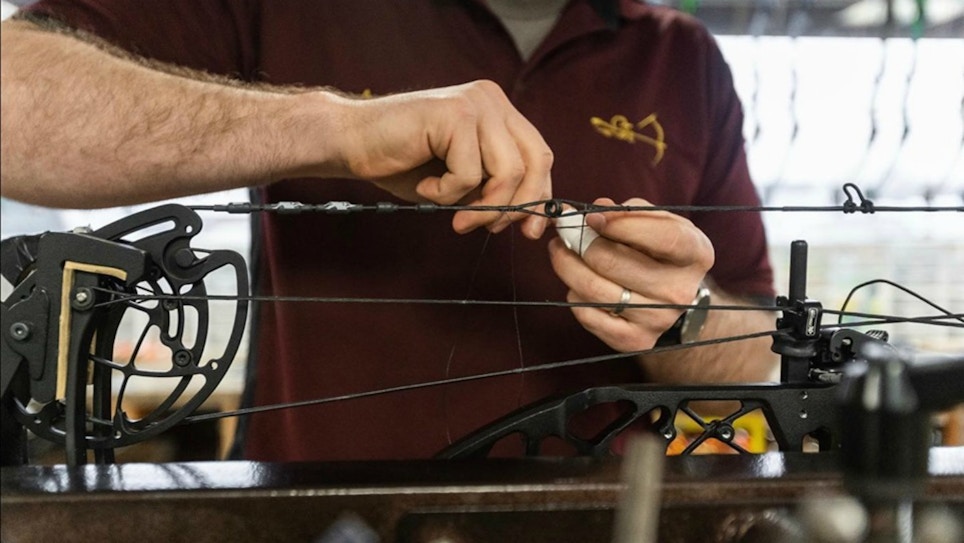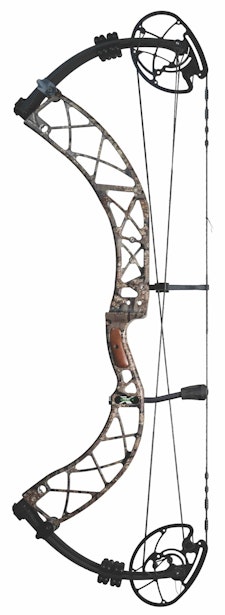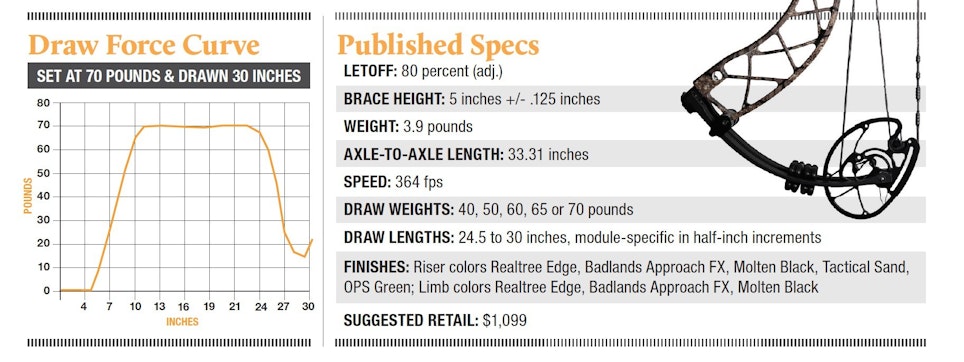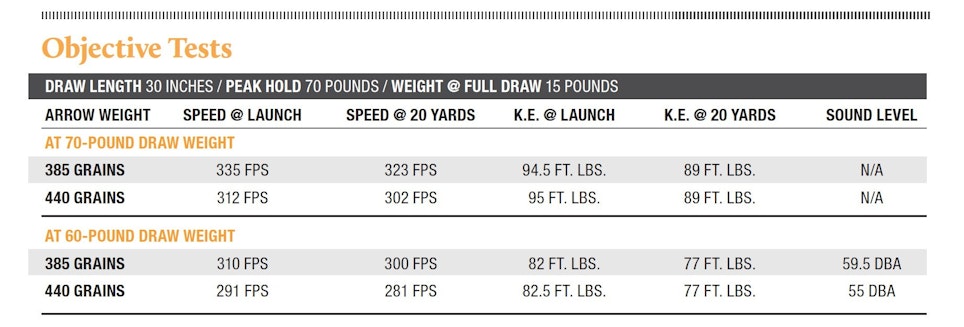Fast enough may be fast enough, but are bow designs reaching the point at which smooth enough is smooth enough? How much shootability will bowhunters give up to maximize speed? Not much, if recent trends are an indication. But speed does have undeniable advantages. What if you could pick up a lot of speed with no compromise in shootability? Okay, that’s not going to happen. So, what if you could pick up a lot of speed with little compromise? Based mostly on my observations, that’s the idea behind the Xpedition Archery Mako X, as well as a number of Kevin Strothers’ designs over the years.
With a published IBO speed of 364 fps, the new flagship Mako X is a barnburner by any standard, and the fastest Xpedition bow to date. At its heart is the XS-M cam system, a hybrid cam that is aggressive by current standards while maintaining a smooth draw cycle, as the draw force chart reveals. It’s a modular system covering draw ranges of 24.5 to 30 inches, with limb stops top and bottom. Yoked cables can be twisted for fine tuning.
The highly reflexed riser design and correspondingly short 5-inch brace height certainly contribute to speed. The riser has been aggressively machined with large cutouts to save weight, and the split limbs are past parallel, with limb dampeners between the limbs top and bottom. The entirely new technology on this bow includes a roller guard system designed to reduce cam lean and torque, as well as an updated limb pocket system which Xpedition refers to as rear pivot pockets. Winner’s Choice strings are standard, with five speed nocks top and bottom. The grip, in keeping with recent trends, is a skinny side plate-style grip.
At a tad over 33 inches axle-to-axle, the Mako X is neither a long nor a particularly compact bow. The combination of large cams, highly reflexed riser, and past-parallel limbs contribute to an aggressive appearance. The test model was Molten Black with a standard black string, the only real contrast coming in the form of white and green logos on the limbs. Fit and finish was what you’d expect on a flagship bow, and easily passed the scratch test. There were no visible machine marks or other imperfections.
Shooting the Xpedition Archery Mako X
Set up proceeded without any snags; limb bolts were snug but turned smoothly. All accessories were installed easily. The bow shot well immediately; accomplishing a perfect tear with an unfletched arrow after adding a twist to one cable.
At 3.9 pounds, this bow is a little lighter than might be expected given the length of the riser. The grip is skinny and comfortable, with slick side plates. The draw cycle is smooth; it holds close to peak weight a little longer than some cams might. The valley is not deep. The cams might grab some shooters who do not hold firmly against the back wall — but then again, the shooter who lets the cams grab is not properly pulling through the shot.
Earlier I referenced the shorter brace height. A commonly held theory suggests that a shorter brace height is less forgiving because the arrow stays attached to the string longer, thereby magnifying any induced torque, failure to follow through, or other imperfections in shooting form. Sounds reasonable, except that there is no evidence supporting this theory, at least in the case of modern compound bows; tests suggest no discernible difference in shooting accuracy between short and long brace heights.
At the shot, the speed of the bow is evident. The arrow indeed gets there in a hurry. There is a slight amount of vibration; however, the bow is reasonably quiet, if not a contender for quietest speed bow on the planet. In short, there are measurably quieter, measurably smoother shooting bows on the market but not by a wide margin. Many shooters who appreciate the advantages of a fast bow (and full disclosure, I’m among them) will find that the shootability of this bow is well within their comfort range. And its high speed offers forgiveness, reducing range estimation errors and wind drift, along with added penetration when needed.
For more information, visit www.xpeditionarchery.com.









